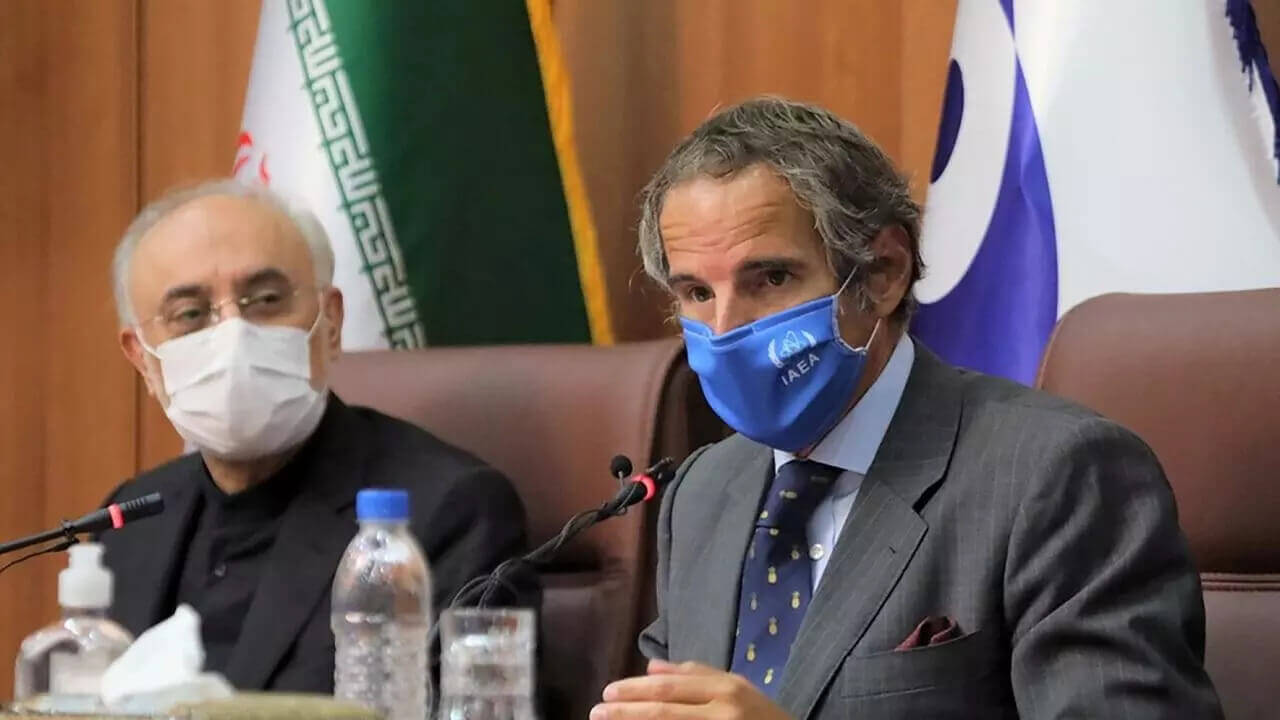Inspectors from the United Nations (UN) ’s nuclear watchdog, the International Atomic Energy Agency (IAEA), have said that Iran has begun building a new underground nuclear centrifuge assembly facility after its previous plant exploded over the summer in an alleged “sabotage attack”. Rafael Grossi, Director-General of the IAEA, told the Associated Press in an interview that Tehran is also continuing to stockpile large quantities of low-enriched uranium. However, it does not seem to have enough to create a dangerous weapon.
Iran’s Natanz nuclear site suffered a massive explosion in July, after which officials said that they would ensure that a new and safer structure is built in the area. Last month, Ali Akbar Salehi, the chief of the Iranian administration’s nuclear department, said that the above-ground facility, which was destroyed, was being replaced with an underground facility “in the heart of the mountains around Natanz”. While experts say that satellite images of Natanz are yet to reveal any apparent indications of excavation, Grossi believes that Iran’s construction of a new facility has “started, but it’s not completed [...] it’s a long process.”
The Natanz Fuel Enrichment Plant (FEP) is Iran’s primary uranium processing centre and has been redeveloped continuously since 2013. While Tehran insists that the site exists for peaceful purposes, Western intelligence and the IAEA believe that the facility was at the heart of a coordinated and clandestine nuclear armaments programme that was halted in 2003. Tehran has maintained that it has never sought nuclear weapons and blamed Israel for the July attack.
Under the conditions of the 2015 Joint Comprehensive Plan of Action (JCPOA) signed between Iran and world powers, the Shi’ite power is only allowed to enrich uranium in specified limits for non-military purposes in exchange for economic incentives by the involved countries. However, since United States (US) President Donald Trump’s administration unilaterally pulled out of the agreement in 2018 and re-imposed its crippling sanctions, other signatories to the deal—including China, France, Germany, the United Kingdom (UK), and Russia—have been struggling to keep it alive. Further, Israel has supported the Trump administration’s “maximum pressure” campaign on Tehran. Iran’s suspicions against Tel Aviv are also fuelled by a 2010 cyberattack on Natanz, which was caused by the Stuxnet computer virus that is widely believed to have been jointly developed by Israel and the US.
Tehran had also been resisting the IAEA’s requests for full access to its nuclear facilities for inspection, which it relaxed late in August to allow Grossi and a team to evaluate its sites and programs. Following the visit, the watchdog reported that Iran had stockpiled 2,105 kg of low-enriched uranium at a purity of 4.5%, ten times higher than the limits of 202.8 kg and 3.67% allowed by the JCPOA. However, the body also noted that this does not mean Tehran has the capability of making a nuclear weapon, for which it would need to enrich uranium to a higher level of purity. “All of these are projections, and the IAEA is not into speculation,” Grossi said. “The fact that there could be such an amount would not indicate automatically that a nuclear weapon is being fabricated, so I think we have to be very careful when we use these terms,” he added.
Meanwhile, Iran and Russia have been exploring prospects to further military cooperation following the end of the five-year international arms embargo imposed on the country by the UN. Iranian ambassador to Moscow Kazem Jalali said, “It is beyond doubt that in these conditions our cooperation with Russia in the military-technical sphere will be developing. There are some prerequisites for this. We have held many negotiations with Russian partners on this issue. When the restrictions are gone, there are many spheres where we can cooperate and implement the contracts that we have. I see very good prospects for cooperation between our countries in this field.” Earlier this month, Jalali had met with Russia’s Deputy Foreign Minister Sergei Ryabkov to discuss the latest updates surrounding the JCPOA, and the two leaders also highlighted the importance of Moscow-Tehran relations for the “sustainable implementation of the agreement in accordance with UN Security Council Resolution 2231.”
Iran and Russia are both at odds with Washington with respect to the future of arms control and nuclear deals. The Trump administration has been unable to reach a consensus with Russian officials regarding the extension of the crucial New START agreement, while simultaneously having pulled out of the Intermediate-Range Nuclear Forces (INF) Treaty and the Open Skies Treaty (OST). Yet, the US continues to slam fresh sanctions on Iran and entities associated with its government, crippling its oil trade and economy, while calling for a ‘snapback’ of international embargoes for a deal that it is no longer a part of.
See also: Can Biden Undo Trump’s Global Arms Control Blunders?

